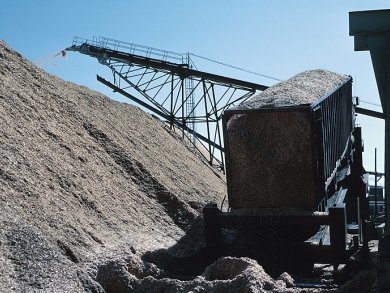The froth flotation technique is used to process about 450 million tons of minerals each year. The process involves crushing the minerals into particles typically less than 100 μm in diameter, then floating the particles in water to separate the commercially valuable components from the waste rock. Low molecular weight surfactants with head groups such as xanthate are used as collectors that selectively bind to those particles rich in the desired mineral. This renders their surfaces more hydrophobic and facilitates their collection by pulling them into air bubbles in the froth of the flotation machine.
Robert Pelton and colleagues, McMaster University, Ontaria, Canada, demonstrated a new collector technology consisting of water-repelling polystyrene nanoparticles. They suspended glass beads to simulate the mineral particles in a commercial surfactant frother. The nanoparticles absoorbed onto the model mineral surfaces and produced a recovery rate of almost 100 %. Smaller and more hydrophobic nanoparticles were the most efficient flotation collectors.
The glass beads required only 10 % surface coverage with the nanoparticles to enable their transfer into the froth. The small amount of nanoparticles required and high flotation efficiencies make this a cheap and simple way to improve mineral recovery.
- Nanoparticle Flotation Collectors: Mechanisms Behind a New Technology
S. Yang, R. Pelton, A. Raegen, M. Montgomery, K. Dalnoki-Veress,
Langmuir 2011, 27(17), 10438—10446.
DOI: 10.1021/la2016534 - Nanoparticle Flotation Collectors II: The Role of Nanoparticle Hydrophobicity
S. Yang, R, Pelton,
Langmuir 2011, 27(18), 11409—11415.
DOI: 10.1021/la202751y




